-
Products
-
SonicPlatform
SonicPlatform is the cybersecurity platform purpose-built for MSPs, making managing complex security environments among multiple tenants easy and streamlined.
Discover More
-
-
Solutions
-
Federal
Protect Federal Agencies and Networks with scalable, purpose-built cybersecurity solutions
Learn MoreFederalProtect Federal Agencies and Networks with scalable, purpose-built cybersecurity solutions
Learn More - Industries
- Use Cases
-
-
Partners
-
Partner Portal
Access to deal registration, MDF, sales and marketing tools, training and more
Learn MorePartner PortalAccess to deal registration, MDF, sales and marketing tools, training and more
Learn More - SonicWall Partners
- Partner Resources
-
-
Support
-
Support Portal
Find answers to your questions by searching across our knowledge base, community, technical documentation and video tutorials
Learn MoreSupport PortalFind answers to your questions by searching across our knowledge base, community, technical documentation and video tutorials
Learn More - Support
- Resources
- Capture Labs
-
- Company
- Contact Us
How to install the DPI-SSL certificate in modern browsers



Description
The Client DPI-SSL deployment scenario typically is used to inspect HTTPS traffic when clients on the LAN browse content located on the WAN. In this scenario, the firewall typically does not own the certificates and private keys for the content it is inspecting. After performing DPI-SSL inspection, the appliance re-writes the certificate sent by the remote server and signs this newly generated certificate with the certificate specified in the Client DPI-SSL configuration. By default, this is the firewall certificate authority (CA) certificate, but a different certificate can be specified. Users should be instructed to add the certificate to their browser’s trusted list to avoid certificate trust errors.
Resolution
For a re-signing certificate authority to successfully re-sign certificates, browsers have to trust the certificate authority. Such trust can be established by having the re-signing certificate imported into the browser's trusted CA list. This article covers how to install the default SonicWall DPI-SSL certificate in modern browsers. Before reading further please download the default DPI-SSL certificate from the SonicWall.
Resolution for SonicOS 7.X
This release includes significant user interface changes and many new features that are different from the SonicOS 6.5 and earlier firmware. The below resolution is for customers using SonicOS 7.X firmware.
Download the Default DPI-SSL certificate:
- Navigate to Policy | DPI-SSL| Client SSL
- Select the Certificate tab.
- Select the appropriate certificate and then click Download.
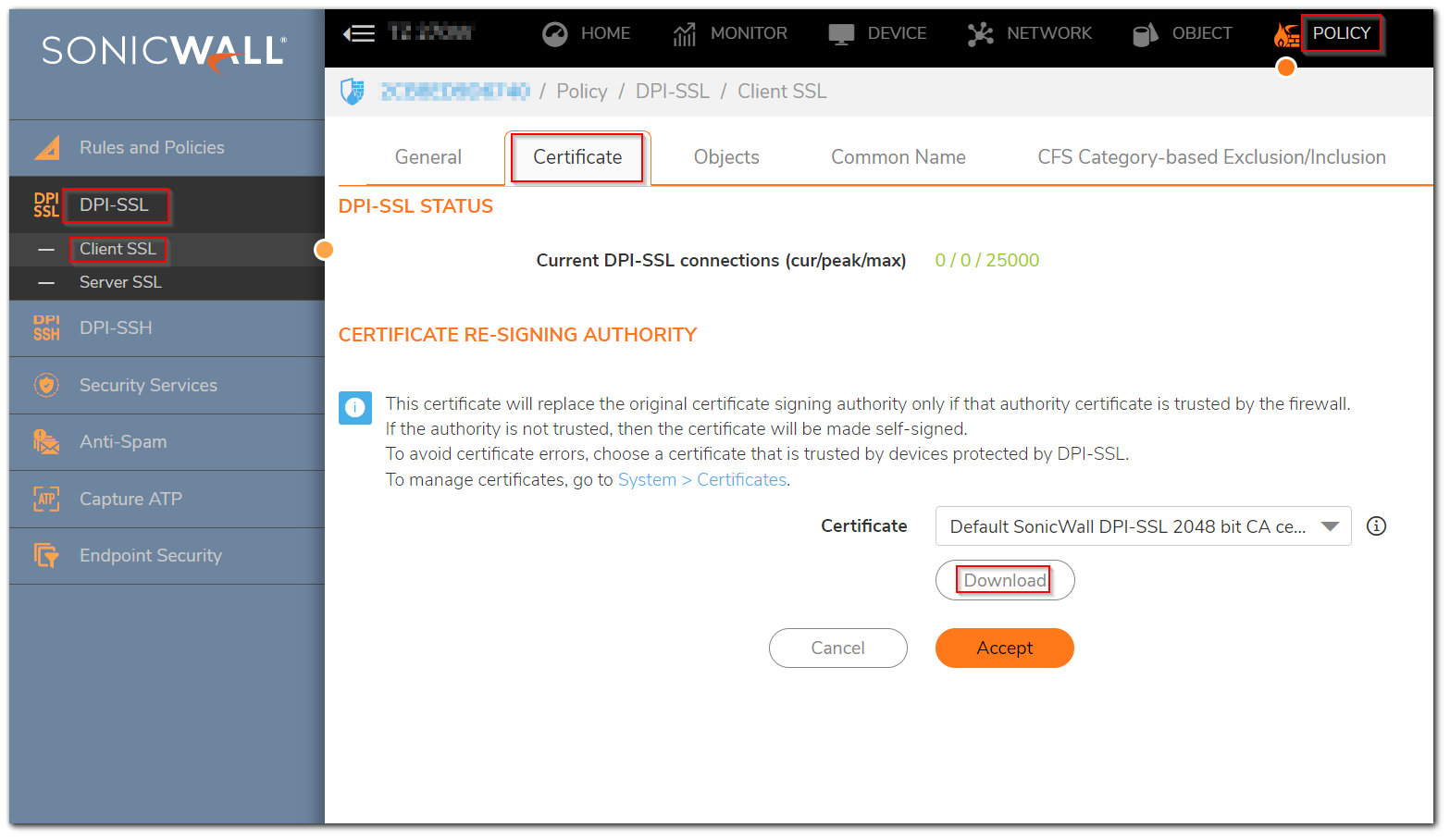
Resolution for SonicOS 6.5
This release includes significant user interface changes and many new features that are different from the SonicOS 6.2 and earlier firmware. The below resolution is for customers using SonicOS 6.5 firmware.
Download the Default DPI-SSL certificate:
- Navigate to Manage | Decryption Services | DPI-SSL/TLS Client.
- Select the Certificate tab.
- Select the appropriate certificate and then click Download.
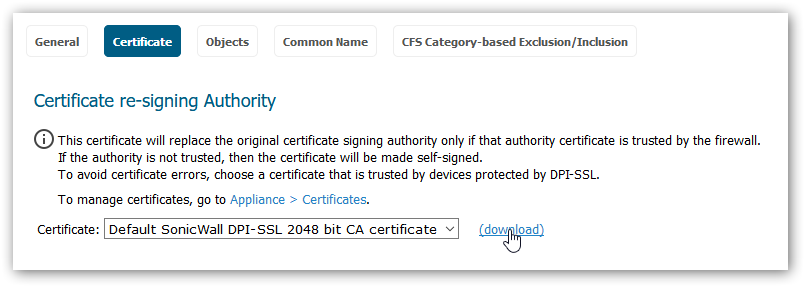
To import the certificate into a browser, perform the following:
- Firefox: Go to settings and search for Certificates, select the Authorities tab, and click Import. Select the certificate file, and make sure the Trust this CA to identify websites check box is selected, and click OK.
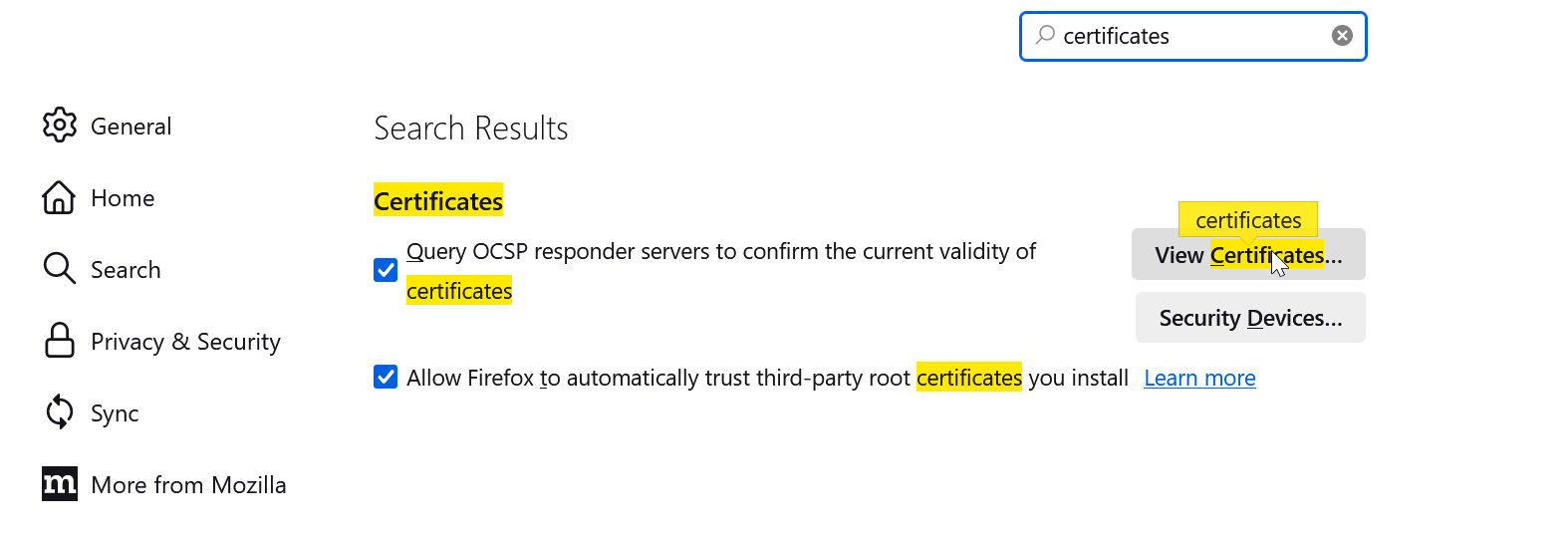
Click on import and impor the DPI SSL certificate.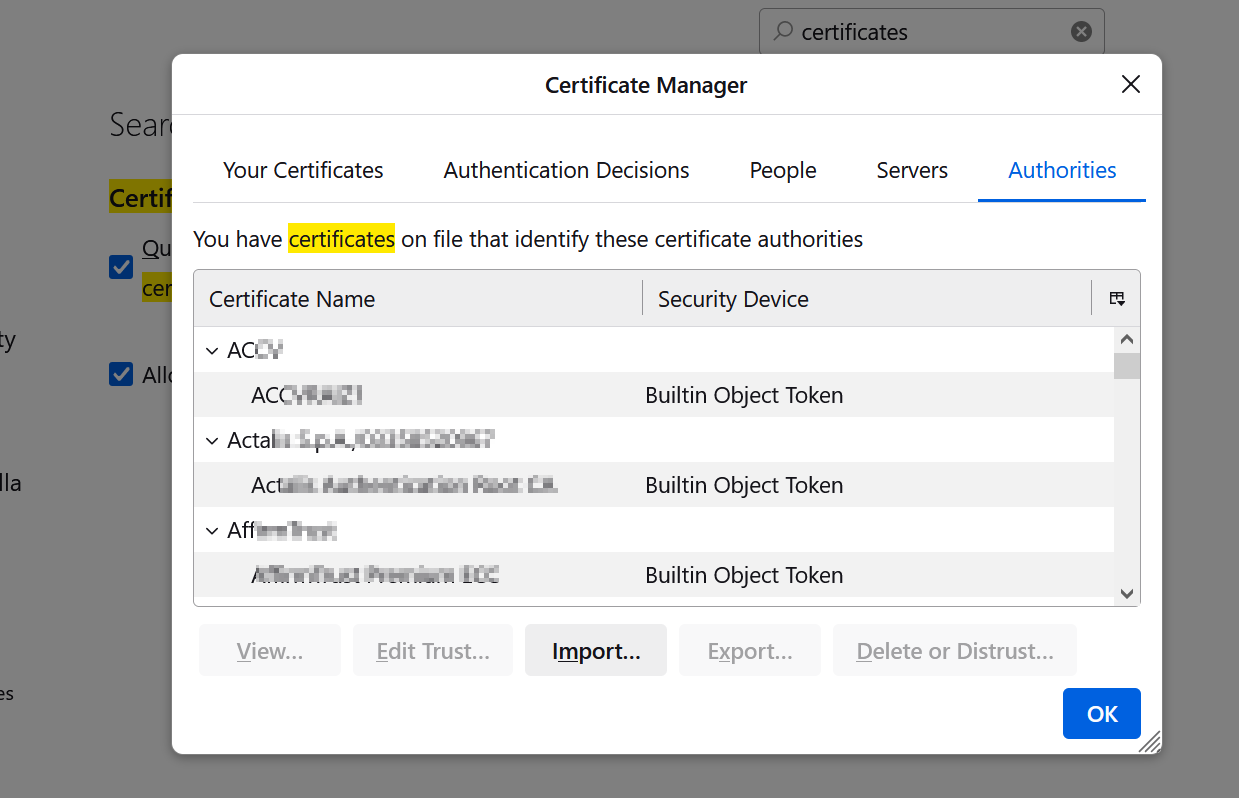
- Chrome: Go to Settings and search for Certificates. Select Manage Certificates. Select the tab Trusted Root Certification Authorities and click Import. Browse for the DPI-SSL Certificate and place it in the Trusted Root store. Once complete close the browser and re-launch. Depending on the operating system a restart may be required.
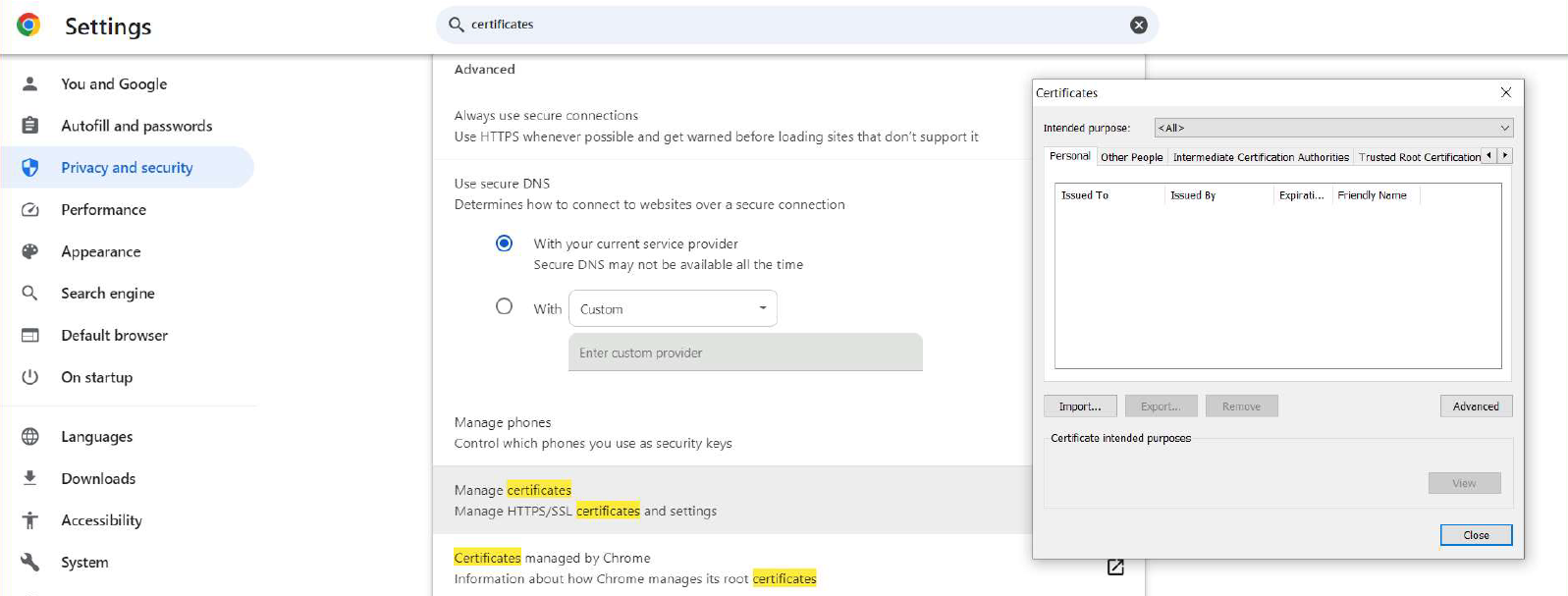
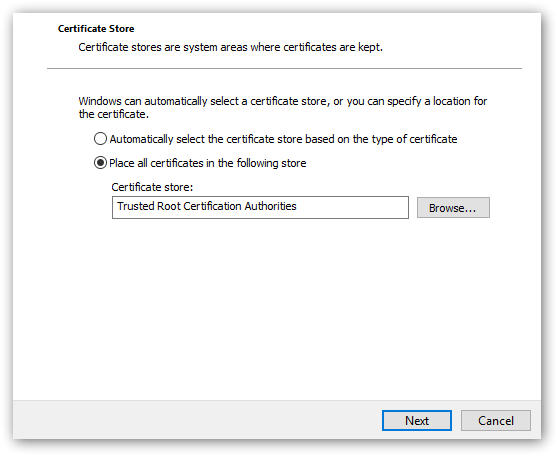
- Mac: Double-click the certificate file, select Keychain menu, click X509 Anchors, and then click OK. Enter the system username and password and click OK.
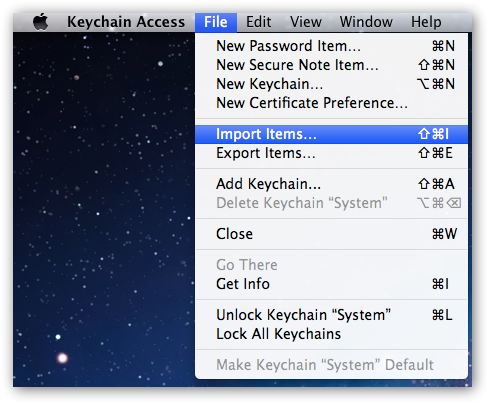
Related Articles
- Error:"Invalid API Argument" when modifying the access rules
- Cysurance Partner FAQ
- Configure probe monitoring for WAN Failover and Loadbalancing - SonicWall UTM
Categories
- Firewalls > SonicWall SuperMassive 9000 Series > DPI-SSL
- Firewalls > SonicWall NSA Series > DPI-SSL
- Firewalls > TZ Series > DPI-SSL






 YES
YES NO
NO